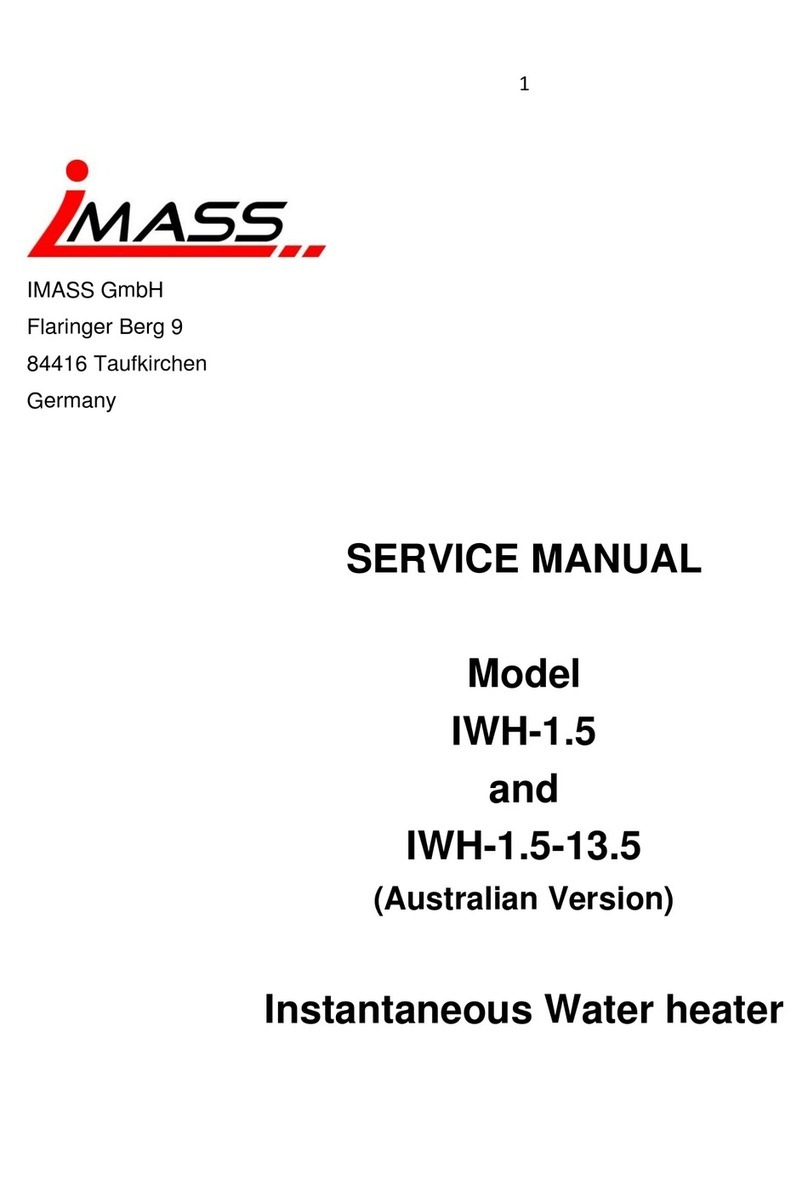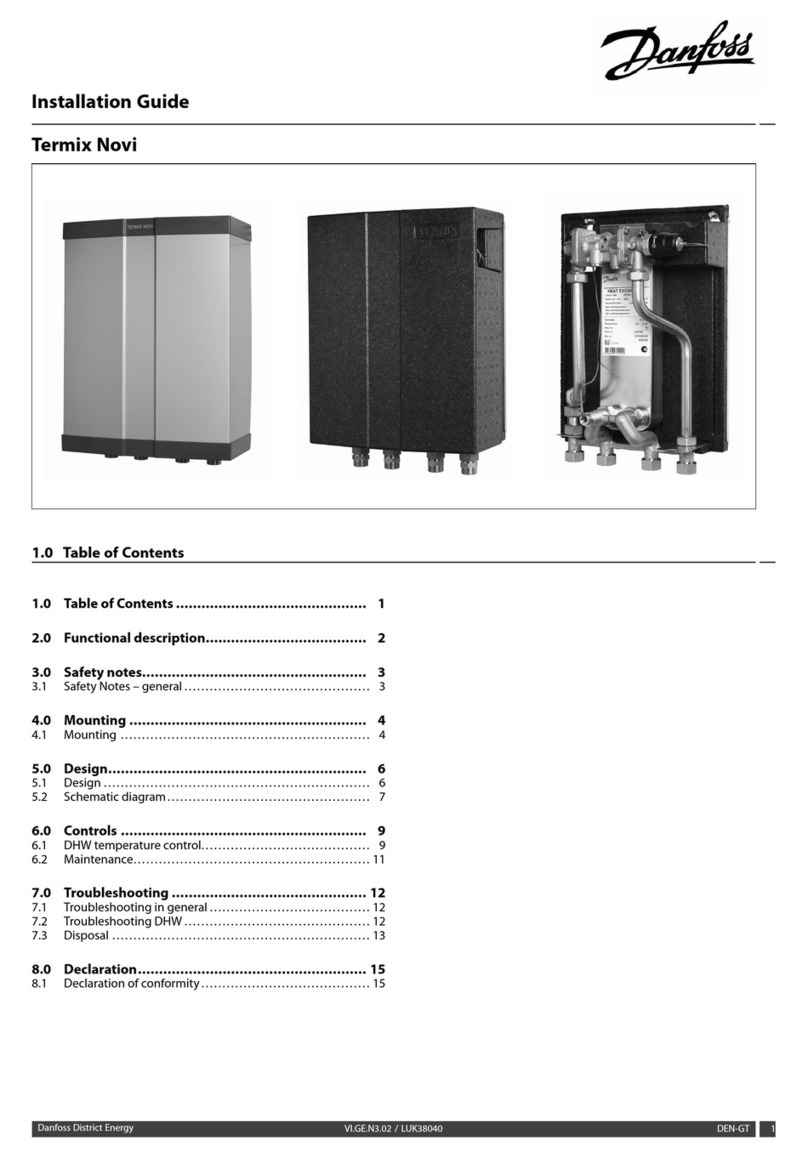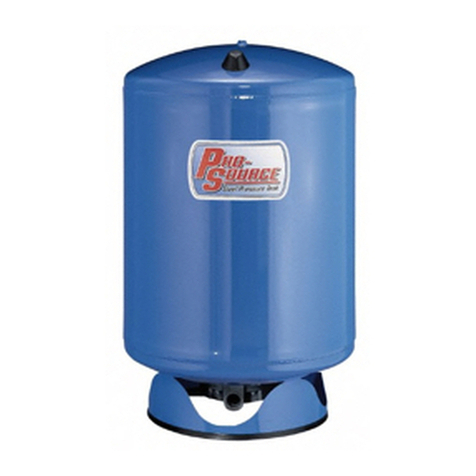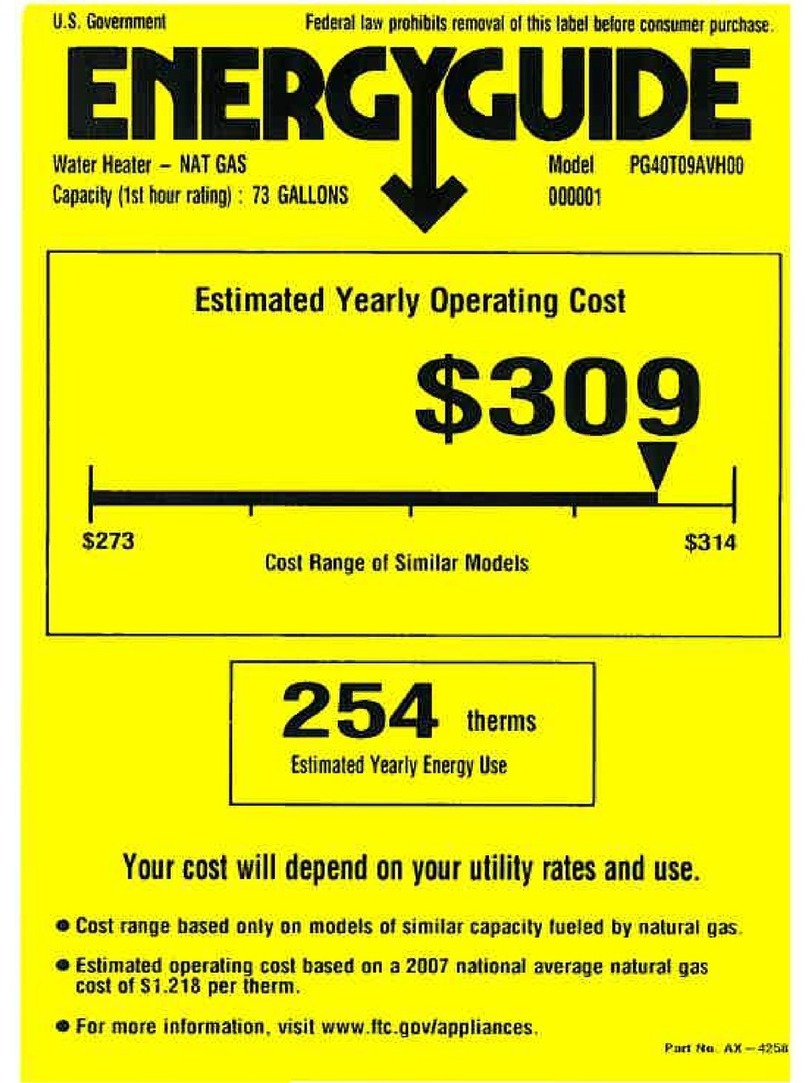IMASS IWH-1.5E User manual

GmbH –IWH-1.5E
Instantaneous Gas Water Heater
Installation and Operating Instructions (version 3.3)
The IWH-1.5E instantaneous water heater is designed according BS EN 1949:2011 +
A1:2013 “Specification for the installation of LPG systems for habitation purposes in leisure
accommodation vehicles and accommodation purposes in other vehicles”. This water heater
is not for use in space heating or marine application.
WARNING: If the information in these instructions is not followed exactly,
a fire or explosion may result causing property damage, personal injury or loss of life.
Do not store or use gasoline or other flammable vapors and liquids in the vicinity of this
or any other appliance. WHAT TO DO IF YOU SMELL GAS
Evacuate all persons from the vehicle.
Shut off the gas supply at the gas container or source.
Do not touch any electrical switch, or use any phone or radio in the vehicle.
Do not start the vehicle’s engine or electric generator.
Contact the nearest gas supplier or qualified service technician for repairs.
If you cannot reach a gas supplier or qualified service technician, contact the
nearest fire department
Do not turn on the gas supply until the gas leak(s) has been repaired.
Installation and service must be performed by a qualified installer, service
agency, OEM or the gas supplier.
If you want an additional safety, we recommend an additional extern tempering valve, which
restricts the water temperature to 50°C.
For most applications it is not necessary. Only if you slow down the water flow under 2l/min
very quick, the cold water has already temperatures over 20-25°C and you are not using any
mixing tab, the temperature might rise over 60°C for a short time (<1 min).
Critical Installation Warnings
● Install in recreation vehicles only. RV’s are recreation vehicles designed as temporary
living quarters for recreation, camping, or travel use having their own power or towed by
another vehicle.
●All combustion air must be supplied from outside the RV, and all products of combustion
must be vented to outside the RV.
● DO NOT vent water heater with venting system serving another appliance.
● DO NOT vent water heater to an outside enclosed porch area.
●Protect building materials from flue gas exhaust.
● Install water heater on an exterior wall, with access door opening to outdoors.
● DO NOT modify water heater in any way.
● DO NOT alter water heater for a positive grounding system.

● DO NOT HI-POT water heater unless electronic ignition system (circuit board) has been
disconnected.
● DO NOT use battery charger to supply power to water heater even when testing.
Do not install close to opening door or under room slide-out where the vent or inlet louvers
can be obstructed.
● Remove every packaging and transit protection in- and outside of the water heater
● Installation and servicing of this appliance must only be carried out by competent persons
registered with the Gas Safe Register (GB) or the relevant national organisation, in
accordance with the relevant regulatory and safety requirements.
Before installation ensure the appliance has been supplied in good condition and if damaged
do not install.
A competent person should install the appliance in accordance with the appliance installation
instructions. This appliance is for use with LPG (see appliance data plate). Check that the
product is suitable for the intended application in particular the installer must check the
compatibility of the data plate information with the LPG supply requirements of the vehicle.
Follow these installation instructions and ensure all relevant personnel read the points listed
below. Also ensure that these operating instructions are passed on to the end user.
Please note: The appliance should be installed in accordance with any relevant regulations
in the country where the appliance is installed.
Ventilation must comply with relevant national and/or local requirements.
Installation Instructions for the IWH-1.5E Water Heater
The IWH-1.5E water heater is designed to be installable and removable from the exterior of
the vehicle. The mounting instructions are for the PrecisionTemp surface mount door. No
other door should be used. Doing so will void the warranty and cause the heater to male
function and could cause damage or injury.
Please read these instructions before making any modifications to the construction of your
caravan or RV.
Selecting Installation Location
The water heater must not be installed in an area where the vent can be covered when any
door or access panel on the coach is opened. The water heater should be located in an area
where leakage will not result in damage to other items of, or in the structure. If such an area
cannot be avoided, it is recommended that a suitable pan and drain be installed under the
heater. Install the heater as close to the gas supply as practical to minimize length of the gas
line.
* do not install below an opening window or a ventilator grill
* horizontally to an opening window or ventilator grill: 300mm
* from an external corner: 200mm minimum.
* horizontally from a terminal on the same wall: 300mm
* within 300mm of a refuelling point or breather outlet

Do not block or restrict door louvers, this will damage the IWH-1.5E.
Although the IWH-1.5E can be mounted with zero clearance around the sides, top and
bottom, be sure that the installation does not interfere with any wiring, plumbing or cabinets
inside the coach. Do not install the water heater or any other appliance where it can vent into
an area covered by an awning, canopy or any other enclosure. For better support and ease
of installation, install where the bottom of the heater case rests on a floor.
Installing Heater In The Side Wall Of A Coach
The model IWH-1.5E refers to the heater with a surface mount door. The IWH-1.5E can
retrofit most tank water heaters without side wall modification regardless of side wall framing.
It is possible, that you have to use a kind of adapter frame.
Surface Mount Installation
Surround the opening on the skin of the coach with four to six inches of masking tape to pro-
tect the skin of the side wall.
Cut a rectangular hole with a width of 33 cm and a height of 33cm at the selected position.
Push the IWH-1.5E into the opening. Center the heater in the opening and start a screw in
the top center hole.
Run the screw down but not tight. Apply silicone or other appropriate sealant under the IWH-
1.5E flanges.
Push the unit into the opening to bed into the sealant. Now screw in the other three center
screws.
Apply silicone or other appropriate sealant heavily in the corners and on the flange around
the corner holes.
Place the corner pieces in the corner so the holes line up and put four screws in each corner.
Seal where the corner bracket meets the corner of the case. Remove excess sealant.

Connection Gas Supply
Connect an approved gas line with 8 mm diameter to the gas inlet using an olive connection.
The olives have to be selected according to the gas supply pipe used. The brass olive, which
is delivered with the unit, is only for the usage with 8 mm copper gas pipes.
Before connecting the gas pipe, please ensure that the gas line is free of dirt and swarf.
The gas pipe has to be installed in a way that it is easily possible to disconnect the gas line
for removing the water heater for service.
A gas shut off valve should be located in the vicinity of the space heater and all connections
should be kept to a minimum.
It is recommended that a gas pressure test point is be fitted to the inlet of the appliance.
When the gas line is complete all joints should be tested for leaks using leak detection
solution –Never with a naked flame.
The gas pressure should be verified at the pressure test point.
Note: The operating pressure for the gas supply should be either 28-30 mbar Butane or
30 mbar Propane.
The gas system and connection should be according EN 1949.
National regulations and rules must be followed.
Connection Water Supply and Hot Water Outlet

The cold water inlet and the hot water outlet are connected via 2 standard ½” male fitting.
Use a rubber seal or other removable sealants.
Piping and components connected to the heater shall be suitable for use with potable
water.
If you us a water pressure regulator, the output pressure should be between 0.5 and 4.5
bar and the minimum water flow should be higher than 3.3 l/min.
When tightening water connections to the water line, be sure to back up the fittings with a
wrench as to not damage the copper water tubing. Re-tighten the compressions nuts on the water
fittings.
With the power and gas supplyto the heater turned off, pressurize the water system, purge it of all air
andcheckforleaks.
The water heater is controlled and started by the water flow. If the water flow is higher than
1.5 l/min, the burner starts automatically and heats up the water to the desired temperature.
Connection Electrical Supply and Remote Control

The water heater is designed for 12 VDC (10.5 …15V, negative ground). The power leads
are on the back of the heater and should be connected via a breaking switch to the 12 V
system of the RV. The white wire is positive (+) and the black wire is negative (see sticker). A
breaking switch is recommended for safety reasons, so the water heater could be switched
of separately.
If the leads need to be extended or any wiring is extended or replaced inside the heater, use
a minimum of 0.5 mm² wire with a temperature rating of 105°C. It is suggested that the heater
be connected to a breaker rated at 2 amps.
Never connect heater to a power converter without a battery in line or a battery charger. Do-
ing so could damage your heater and void the warranty. Be sure that the heater is connected
to a "filtered" (pure DC) circuit of the converter. To test whether the circuit is pure DC, take a
voltage reading using a multimeter set on the AC voltage scale. If the reading is more than
1 volt, the circuit is not pure DC voltage and should not be used. (See the tag on white and
black power wire on the back of heater)
For the remote control cut a hole with a height of 72 mm and a width of 58 mm in a proper
position of a (wooden) wall inside of the RV and snap it in. Please consider, that the standard
cable has a length of 3 m. Plug in the remote cable, which you find at the backside of the
water heater. A longer remote cable could be ordered as an option.
Never extend the remote cable by yourselves –the water heater will lose the approval and
warranty.

Operating Instructions and first operation test
Note to installer: You must test the operation of this appliance after installation.
1. Pressurize the water system by turning on pump or city water pressure.
2. Purge all air from system by turning on the taps until a steady stream of water flows
from the taps. Turn off taps.
3. Turn on the 12 VDC power supply.
A testing sequence on the remote starts and after a few seconds, the display shows
the last selected temperature. The production preset water temperature of the water
heater is 45° C. The selected water temperature is stored in a nonvolatile memory.
Even after disconnecting the electric power, the former selected temperature will be
displayed. This is an additional feature, so you mustn’t select your desired temperature
again in case of a power loss.
For colder (blue button) or warmer water (red button) press the buttons till you reach
the desired temperature.
4. Turn on the gas supply at tank and the manual gas valve if installed in system.
Heater will remain dormant until a water tap is opened and the heater senses a water
flow of at least 2.5 l/min.
5. Turn on hot water tap (water flows and/or pump starts). The heater will fire up within
two seconds and hot water will flowfrom the tap in the time that it takes to get through
the plumbing from the heater to the tap. Hot water delivery will continue as long as
the water is flowing. Depending on the length of the hot water line, it might take up
to 20 sec, till the hot water comes out of the tap.
After the first installation or when you change the gas bottle, it might need 3-5 trials,
till the gas has reached the burner and you have ignition. In the display failure E1 is
shown, what means no flam detection. When E1 appears, just turn off and on the
water tab and a new trial starts.
After the burner started you see the current temperature in the display. Depending
on the water flow and the incoming temperature of the cold water, it will take some
seconds, till the control reaches the desired water temperature.
6. When you close the hot water tap, the heater will shut off and remain in “stand-by
mode”.
7. With the ON/OFF button of the remote control, you can switch off the water heater
continuously, so the burner is not activated via the water flow.

Trouble shooting
The IWH-1.5E is equipped with a µ-processor based self-diagnostic system. A possible
error is shown in the LED display of the remote control.
Failure code shown in the display
E0
No flame detection during operation and re-ignition failure within 10 sec
E1
Pilot flame doesn’t light up after 10 sec.
E4
Flame controller delivers a signal before water tap is opened.
E5
Broken circuit of NTC
E6
Short circuit of NTC or hot water exceeds 85℃
E7
Flameout for many times because of unstable ionization signal.
E8
Safety temperature switch defect or released
E9
Breakdown of air pressure switch, problem with air flow or supply voltage too low
EA
Damaged NTC
EB
Damaged CPU or circuit
ED
Memory error of CPU
EE
Damaged CRC
(for the RESET of the water heater, disconnect the 12 VDC power for at least 2 min)
Heater does not start when the water turns on
1. Be sure all electrical connectors are secure and the polarity is correct.
2. Be sure power is on and panel breaker is not tripped.
3. Check electrical contacts in electronics drawer. Be sure the connector with “+”and
“-“power wire is plugged into board. Using a voltmeter, check for 12 Volts on this
connector. Check the 5x20 fuse in the “+”wire. If you’ve interchanged “+” and “-“, the
fuse is blown and you have to replace it with 2A/F.
4. Water heater is switched on via the ON/OFF button on the remote control.
5. Be sure there is a battery in the system. Never connect the heater directly to a power
converter. Some converters have circuits that are not pure DC.
6. Be sure the gas valve at the tank is “On” and there is gas in the tank.
7. Be sure that the water flow is at least 2.5 l/minute.
8. If you have changed the gas bottle it takes a while till the gas lines are filled with gas
and the gas reaches the water heater.
If E1 is displayed, there was no flame detection. Close the water tap for a few
seconds and open it again. Depending on the length of the gas line, it could take
several times, till you have ignition.
When you have flame ignition, you see the current water temperature rising in the
display.
9. If the water temperature is not reaching the desired temperature, you may have a too
high water flow or you have extremely cold incoming water. Reducing the water flow
will rise the outgoing water very quick to the desired temperature.

Maintenance
Routine Maintenance
All faucet aerators and showerhead screens should be cleaned regularly.
It is recommended that the IWH-1.5 be inspected by a qualified service technician at least
once a year. Particular attention should be paid to the following:
1. Be sure that the air inlet openings and flue area (screen) are clear of any debris or
obstructions, (leaves, bug nests, spider webs, etc.)
2. Check that heater mounting is still secure to the coach and there are no areas for
potential water leaks.
3. Open the cover of the heater and inspect for debris or obstructions under the burner,
around the blower motor or in flue hood.
4. Visually inspect wiring. Be sure there is no chafing of the insulation. Be sure that the
direct spark ignition, the ground and the flame detection cable is secured to the
electrodes at the left side of the burner.
5. Inspect the interior surface of the housing for any cracks or corroded areas that could
allow penetration of gases into or out of the interior of the vehicle. Check especially
around the Hot Water, Cold Water, Gas and electrical connections.
6. Check for soot around the flue. Soot is a sign of incomplete combustion and a
qualified service technician should be notified to correct the problem.
7. Check the pressure relief valve if it’s tight under normal conditions. Test also the
operation of the drain valve for proper function.
Note: never open the drain valve during the operation of the water heater.
8. Turn on the power to the water heater and open a hot water faucet to inspect the
flame of the burner. The flame should be of the normal bluish appearance that
indicates proper combustion. You can observe the flame trough a line of small holes
at the front side of the burner.
9. The appliance should be checked and maintained (if required) periodically by a
competent person with a maximum of 2 years according to the practice in the country
where it is used and to the instructions of the appliance manufacturer
Winterizing and draining water
It is not recommended that you operate water systems in the winter. Any freezing of the
water heater or other plumbing components can cause severe damage that is not covered by
warranty.
NOTE: Under no circumstances, however, should you travel under freezing conditions
without first draining water from the unit. To drain the system:
1. Turn off water pump and the power and gas to the heater. Open the drain valve by
turning the handle to a 90° position from the normal position.
2. Open drain valve that was installed at hot water outlet fitting of heater.
3. Open at least one hot and cold water tap in the coach. This should drain the system.
Before storing the system for the winter, the plumbing system must be winterized. This can
be done by either of the following methods:
All water should be drained from the system. To do this, open one tap at a time, using
compressed air (less than 2 bar) to purge the system of all water.
Recommendations of your coach manufacturer should be followed. Since the IWH-1.5E has
no storage tank, there is no need for a water heater bypass kit. It holds less than 0.3 l
of anti-freeze. The water system can be filled with RV, non-toxic anti-freeze, which doesn’t
affect copper and brass. When you see the anti-freeze coming from the hot water tap, the
heater is protected.

Specifications
Countries of Destination: AT, BE, BG, CY, CZ, DE, DK, EE,
ES, FI, FR, GB, GR, HU, HR, IE,
IS, IT, LT, LU, LV, MT, NL, NO,
PL, PT, RO, SE, SI., SK
Gas CAT I3B/P (30)
Gas pressure butane G30/ propane G31 (mbar) 30
Classification of Heater Type: C12 (Fanned)
Flue diameter in mm ID 45
Standard length exhaust flue (mm) <15 (measured from the surface of
service door)
Nominal max. input in kW (NET) 10.0
Maximum consumption (g/h) 765
Minimum input in kW 5.0
Test point pressure (mbar) 22
Efficiency (%) >84
Maximum water pressure (bar) 5.0
Minimum water pressure (bar) 0.5
Minimum starting water flow (l/min) 1.5
Shut down water flow (l/min) 1.3
Selectable water temperature (°C) 35 ….. 60
Temperature rise at 3.3 l/min (°C) 37.7
Precondition for a stable min. temperature of 35°C water inlet temp. 15°C at 3.3 l/min
Nominal supply voltage VDC 12.0
Operating voltage range VDC 10.5 ….. 15.0
Maximum current consumption (A) 0.44
Dry storage temperature (°C) 0 … 50
Weight (inside vehicle installation) (kg) 11.9

Who to Contact
For service and spares, please contact your selling agent:
Other IMASS Water Heater manuals
Popular Water Heater manuals by other brands

Dux
Dux 2F136S owner's manual
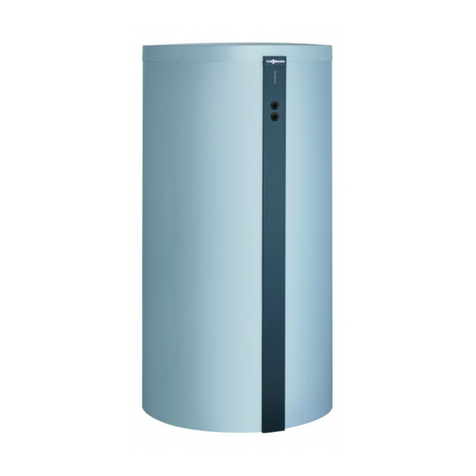
Viessmann
Viessmann Vitocell 100-E Installation and service instructions
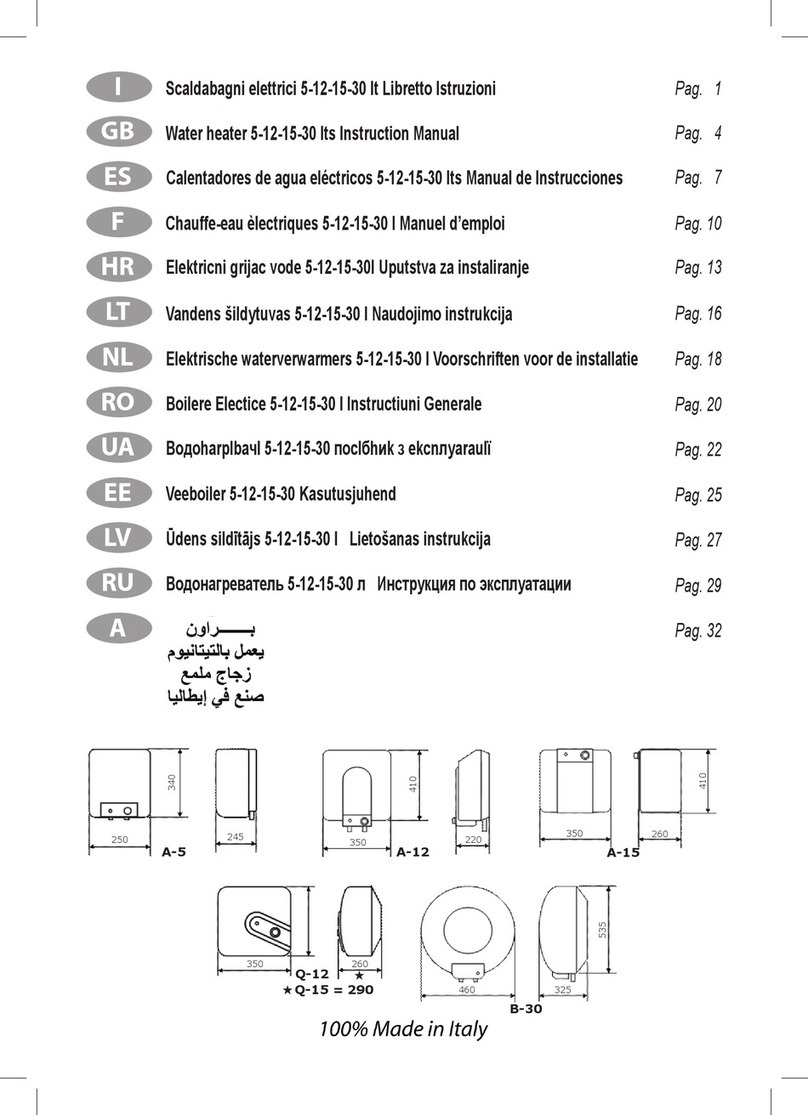
Bandini
Bandini A5 instruction manual
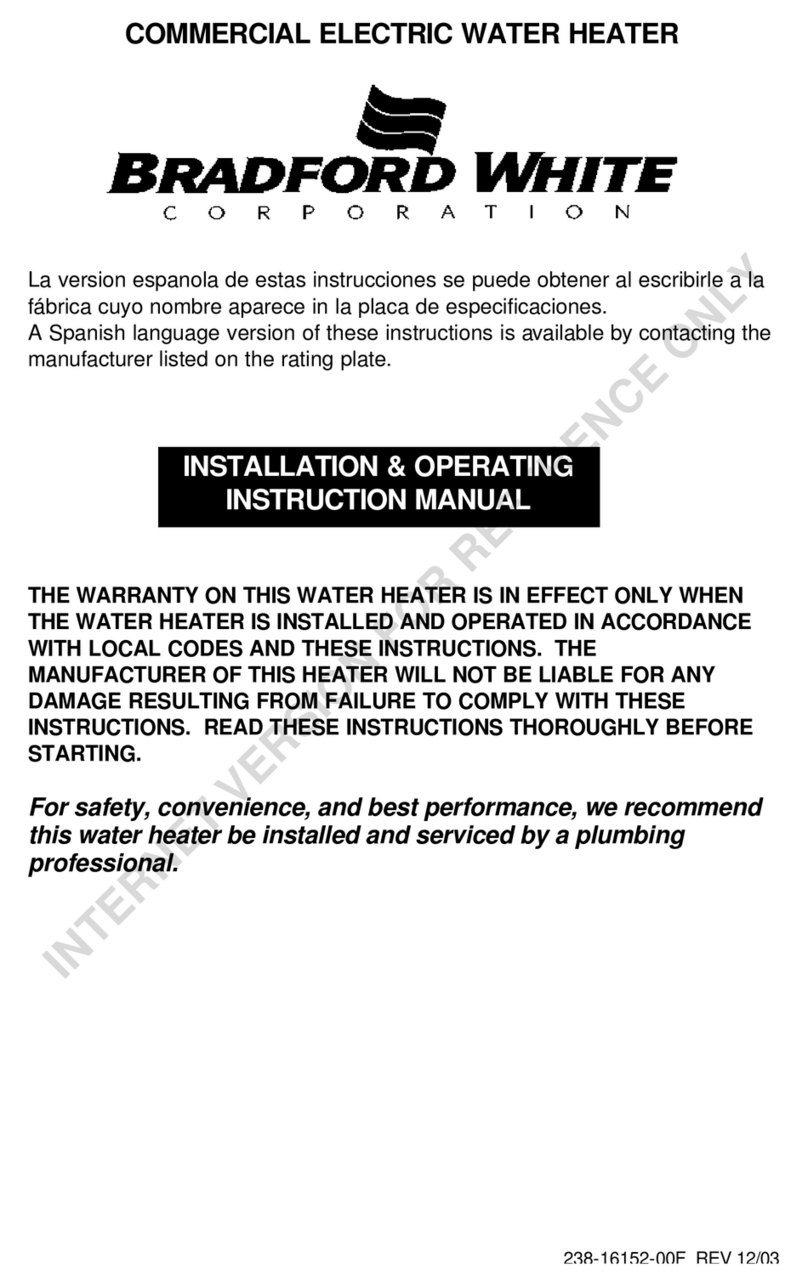
Bradford White
Bradford White 238-16152-00F Installation and operating instruction manual
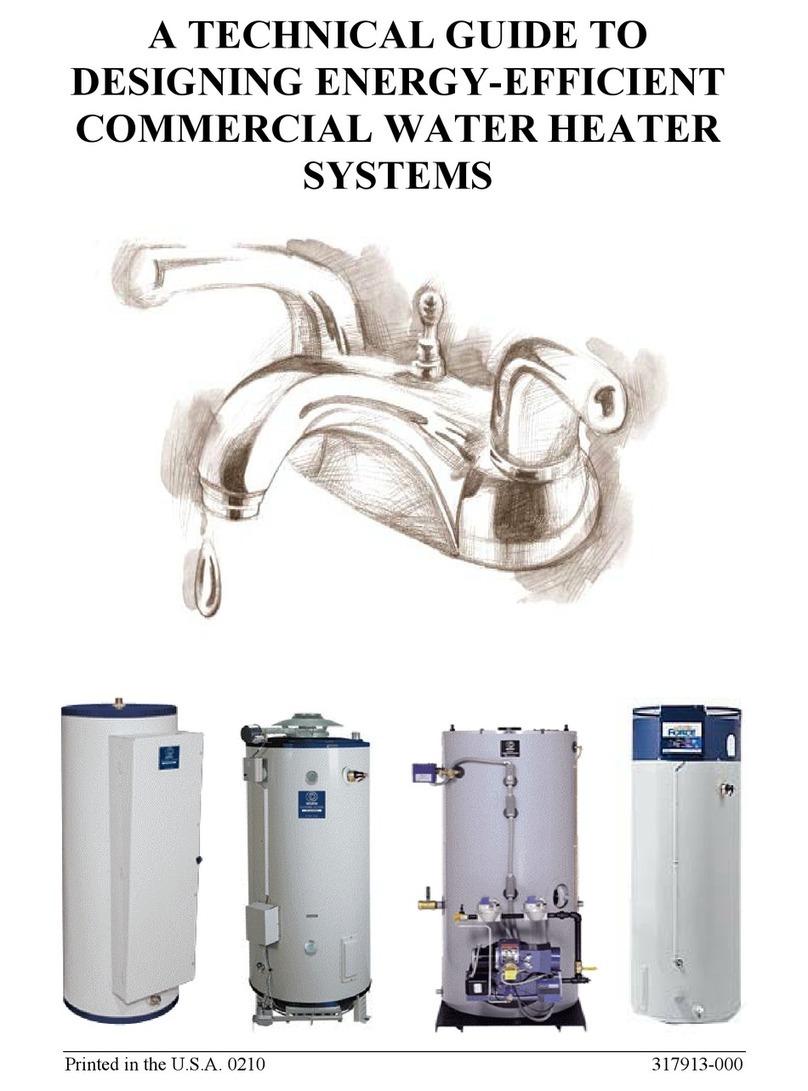
State Water Heaters
State Water Heaters 317913-000 Technical guide
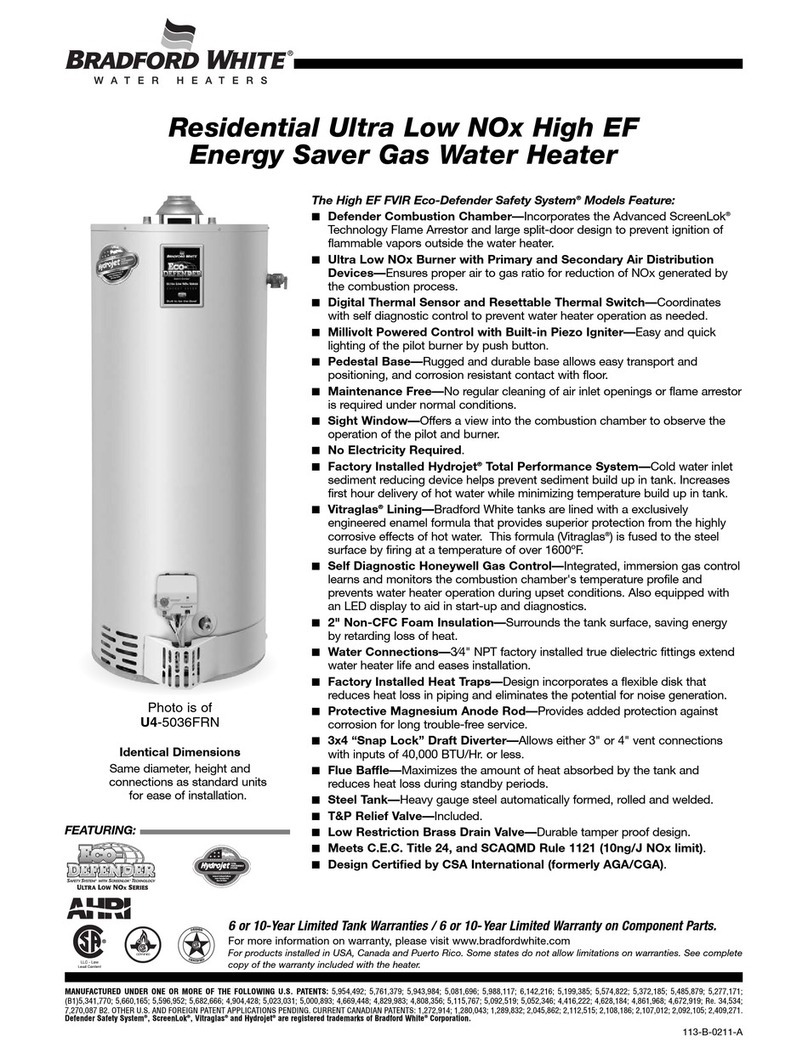
Bradford White
Bradford White U4-30T6FRN Specification sheet
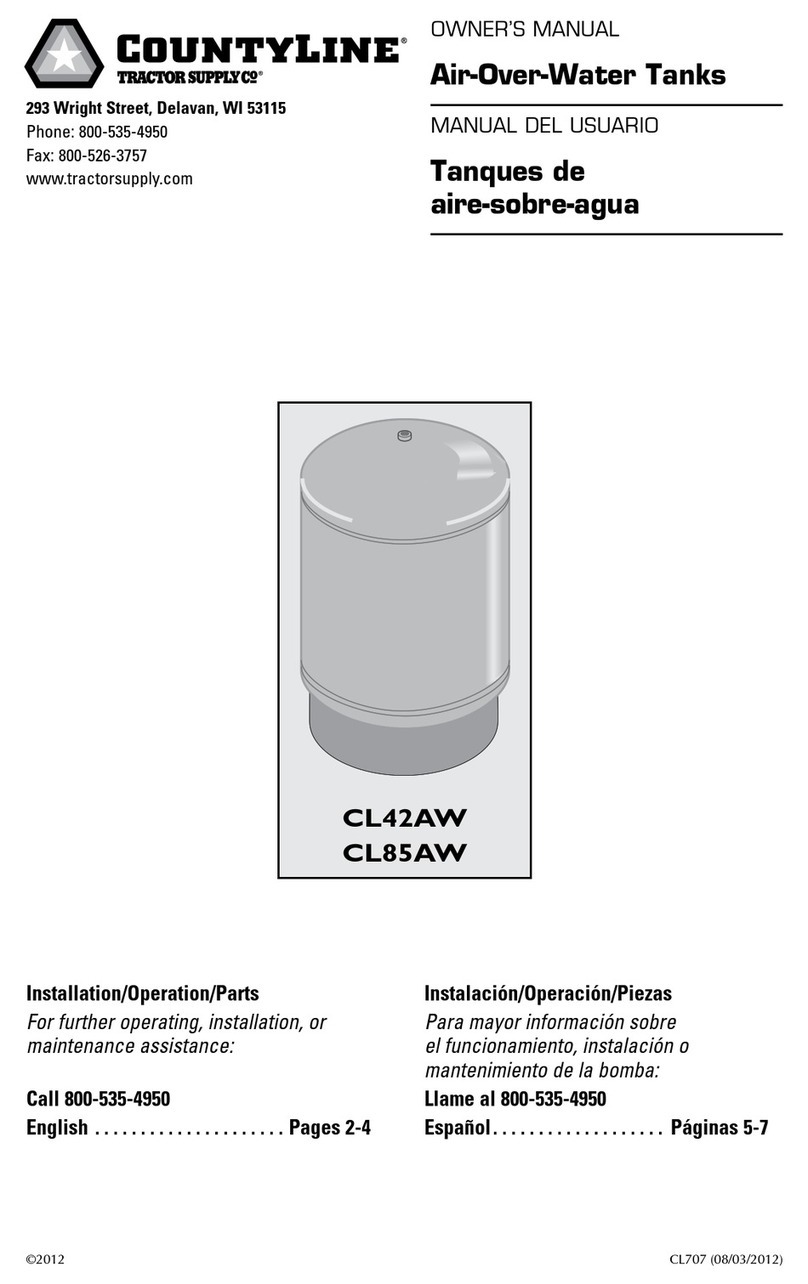
Tractor Supply
Tractor Supply CountyLine CL42AW owner's manual
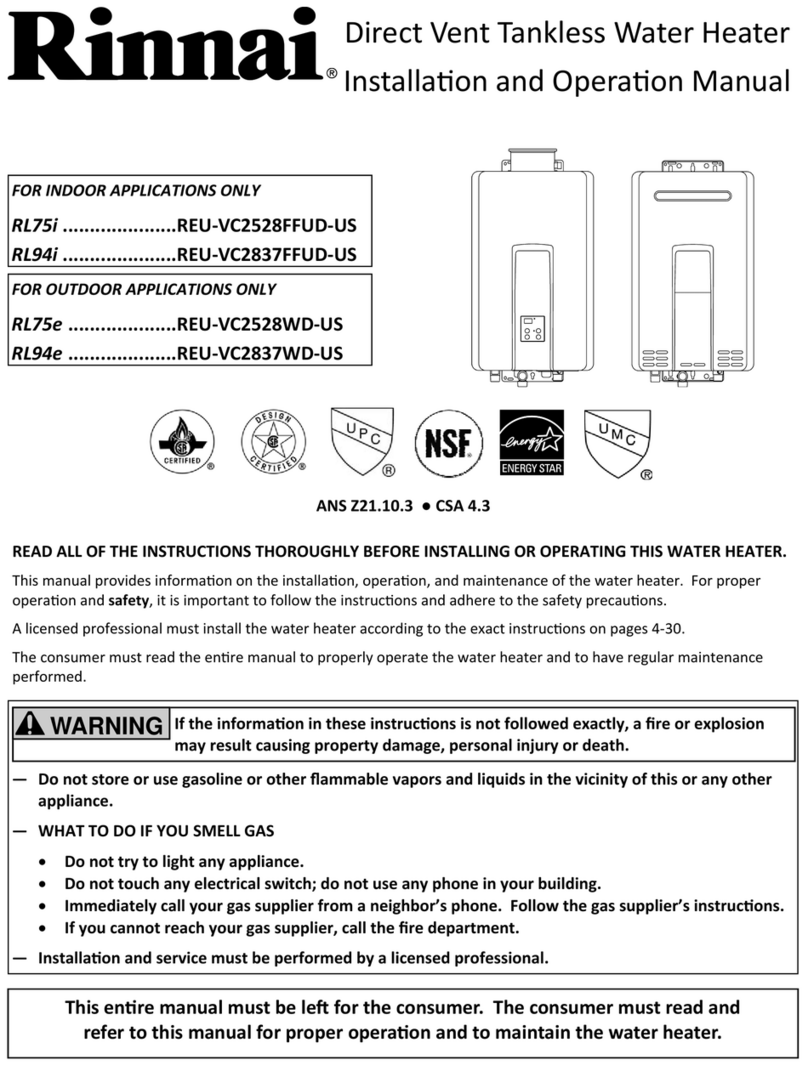
Rinnai
Rinnai REU?VC2528FFUD?US Installation and operation manual
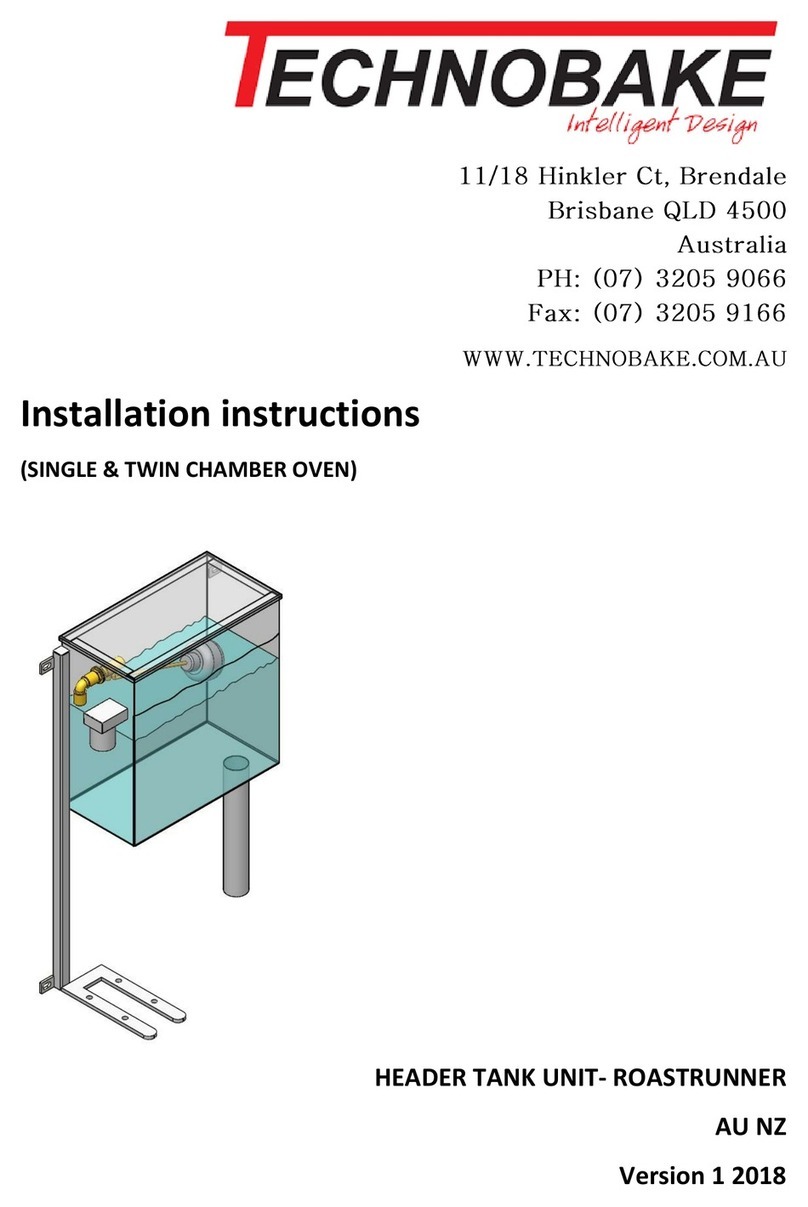
Technobake
Technobake RR-HT-0050 installation instructions

Spheros
Spheros Thermo S 160 Operating and service instructions
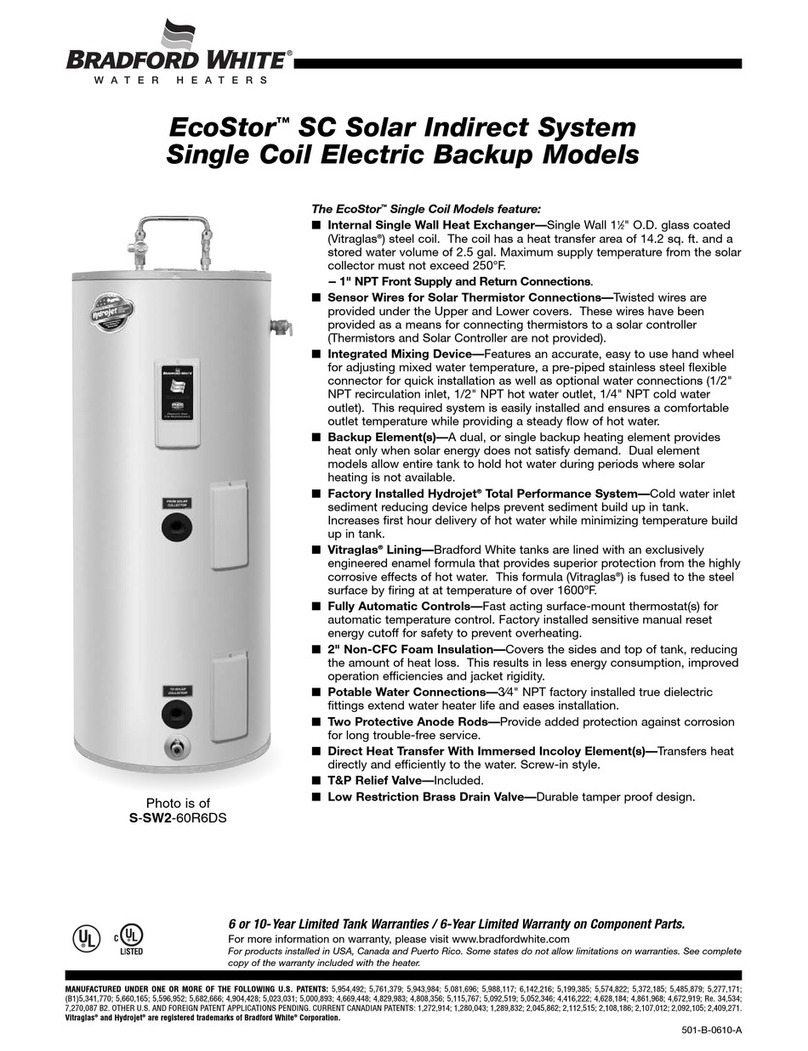
Bradford White
Bradford White S-SW2-60R6DS Specification sheet
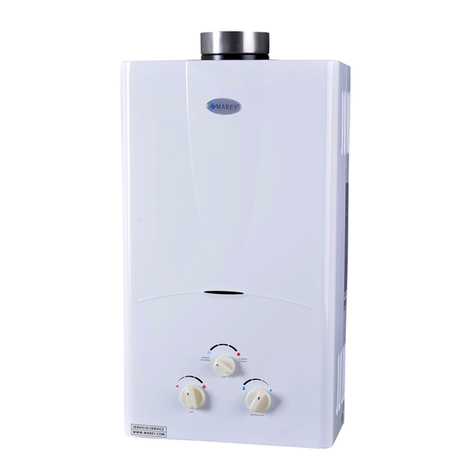
Marey
Marey Gas Models instruction manual
